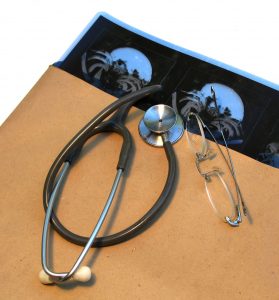Healthcare, like any other industry, must evolve and adapt to technological advancements, but the AJGP commented recently on the implications for general practice of using AI software to write medical notes. The World Health Organisation (WHO) expressed similar concern over the use of AI, when it published a call for the ‘safe and ethical’ use of AI in healthcare.
General practice summariser training is a crucial aspect of modern healthcare that focuses on efficiently summarising patient records to enhance the quality and timeliness of care. Summarising patient information is essential because it condenses extensive medical histories into concise, easily accessible formats. By providing healthcare professionals with a comprehensive overview of a patient’s medical background, good summarising techniques streamline the decision-making process, enabling prompt and appropriate care delivery.
Effective summarising reduces the reliance on accessing patients’ paper records, which can be time-consuming and cumbersome. In traditional healthcare settings, healthcare providers often had to manually sift through voluminous paper records, searching for relevant information. This process was not only time-consuming but also prone to errors and delays. However, with the advent of digital summarising tools, healthcare professionals can swiftly retrieve pertinent patient details, saving valuable time and resources.
By reducing the need to access paper records, good summarising techniques enhance efficiency and enable healthcare providers to allocate their time more effectively. Instead of spending excessive time searching for information, practitioners can focus on providing personalised care to patients. This accelerated decision-making process ensures that patients receive the most appropriate level of care promptly, leading to improved patient outcomes.
Furthermore, efficient summarising enhances communication and collaboration among healthcare professionals. By presenting a concise summary of a patient’s medical history, these tools facilitate effective handovers, enabling seamless transitions in care. Whether it is a transfer from primary care to a specialist or a hospital admission, accurate and comprehensive summaries provide healthcare professionals with the necessary information to make informed decisions promptly.
Clear and concise summaries help identify potential drug interactions, allergies, or underlying medical conditions that may impact treatment decisions. This information ensures that healthcare professionals have a holistic understanding of the patient’s health, reducing the likelihood of adverse events and improving patient safety. While Chat GPT might be able to produce output, it is easy to confuse confidence with competence, and the output of these programmes certainly appears extremely confident. Tools like ChatGPT have not been designed or tested in this area. We would expect doctors not to prescribe untested medications; we should expect the same with using these tools for clinical work without appropriate safeguards.








 Medical terminology transcription errors could be putting patients lives at risk, because of a growing number of cash-strapped hospitals sending medical notes abroad to save money, Unison warned today.
Medical terminology transcription errors could be putting patients lives at risk, because of a growing number of cash-strapped hospitals sending medical notes abroad to save money, Unison warned today.